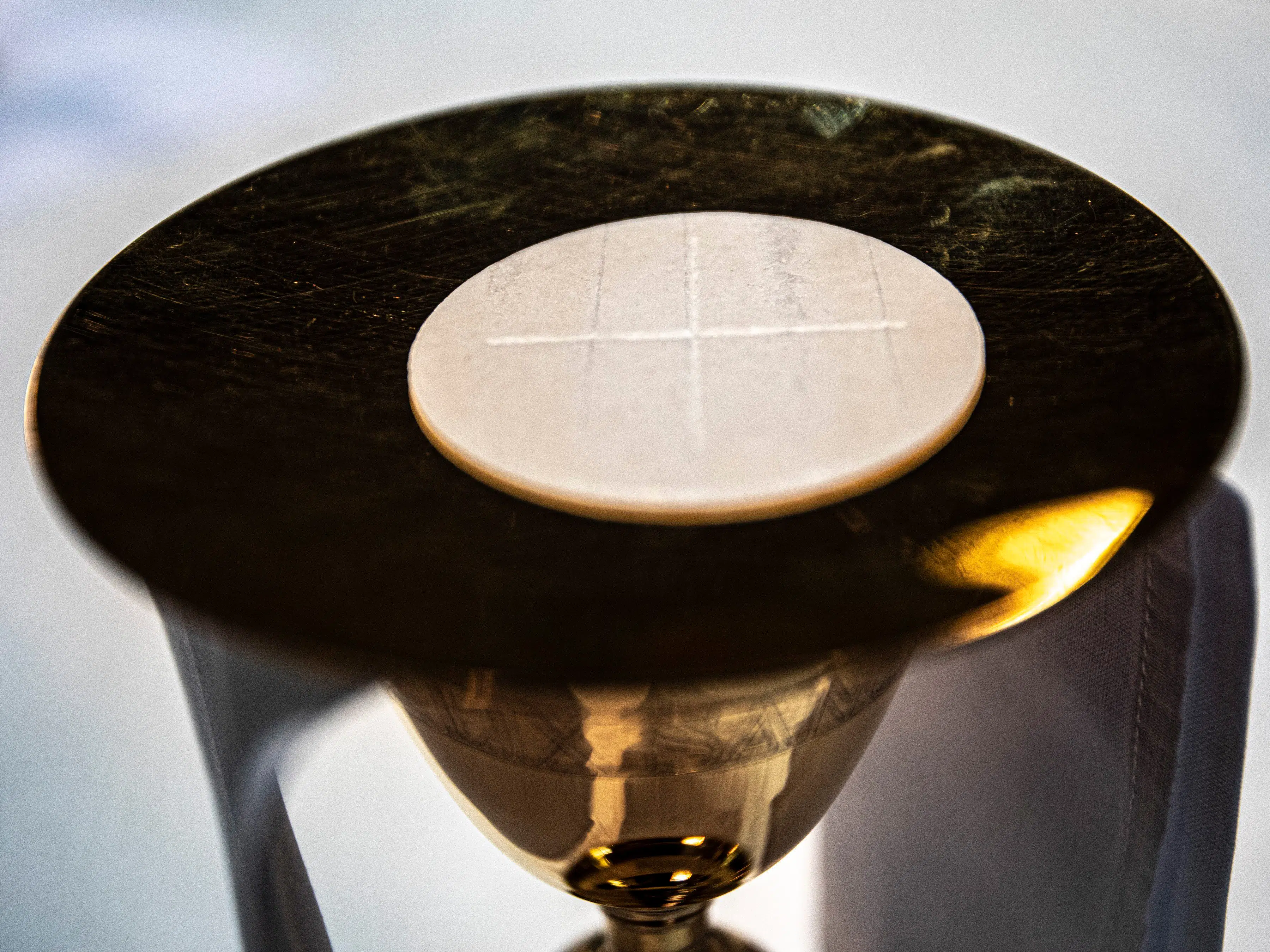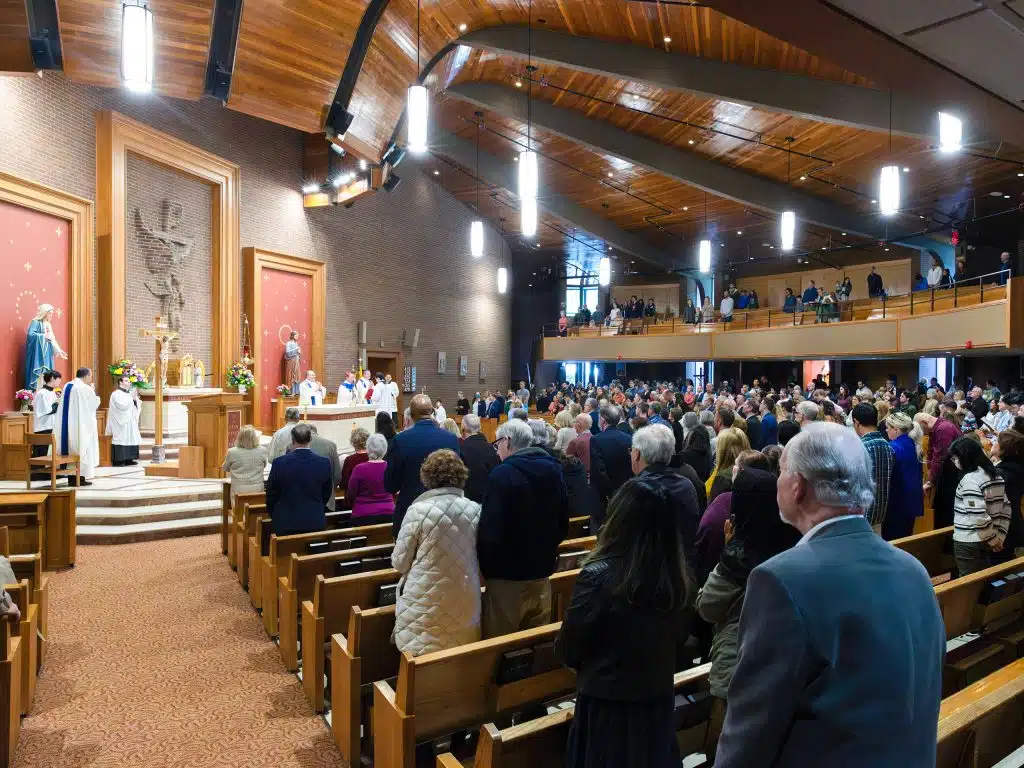The Catholic Church has consistently held that the Eucharist is the body and blood of Jesus Christ under the appearance of bread and wine. However, over half of Catholics do not accept this teaching. In order to dispel doubts, God has provided many instances throughout church history where the consecrated bread and/or wine have become human flesh and blood. These events are called Eucharistic miracles and more than 150 such cases have been approved by the Vatican. Five of these cases have been scientifically investigated and the results are astounding.
One incident occurred in Lanciano, Italy, in the mid-eighth century. In 1971, samples of a transformed host and blood were examined by an Italian doctor, Odoardo Linoli, a professor of anatomy and pathological histology. Linoli found that: the samples are real human flesh and blood; the flesh consists of heart muscle tissue; the blood type is AB, which is the same as on the Shroud of Turin; and there was no evidence of preservatives.
After Mass Aug. 18, 1996, at St. Mary Church in Buenos Aires, Argentina, a discarded consecrated host was placed in water and locked in the tabernacle so it would dissolve. The tabernacle was opened Aug. 26. The host had not dissolved but instead turned into a fleshy bloody substance. After three years, a sample was tested by a team of scientists, including Dr. Frederic Zugiba at Columbia University. Zugiba reported that the sample was muscle tissue from the left ventricle of the heart, which was inflamed and contained a large number of white blood cells, which normally die outside a living organism.
Oct. 21, 2006, at St. Martin of Tours Church in Tixtla, Mexico, a nun was distributing Communion when she noticed one of the hosts began to bleed. A team of scientists conducted tests on a sample from October 2009 to October 2012. Their studies concluded: the reddish substance is human blood with human DNA, but no genetic profile could be obtained; the blood type is AB, which is the same as Lanciano and the Shroud of Turin; the tissue is heart muscle showing signs of stress, with active white blood cells; fresh blood was present under a superficial layer of clotted blood; and the blood emanated from within the host.
Oct. 12, 2008, at St. Anthony of Padua Church in Sokółka, Poland, a consecrated host that had fallen on the floor was placed in a container of water and locked in a safe. One week later, the host had not dissolved but had a red stain on it that looked like a blood clot. It was later determined that samples should be tested independently by two professors of pathological anatomy. Their testing found that the reddish substance is heart muscle tissue with characteristics of a person suffering and near death. They also observed that untransformed bread fibers are microscopically interwoven with the heart tissue in a way that cannot be explained.
Dec. 25, 2013, at St. Hyacinth Church in Legnica, Poland, a consecrated host fell on the floor during Mass. However, instead of dissolving after placed in water, it developed a red spot. The following month, a sample of the red material was submitted for pathological testing. This testing found the sample is heart muscle tissue that bore signs of stress. DNA testing showed the tissue is of human origin, but no genetic profile could be obtained.
There is an amazing similarity in the findings from these scientific studies. They all found the host had changed into living heart muscle tissue under stress, as evidenced by breaks in muscle fibers and presence of white blood cells, which normally die when outside the body. Human blood type AB was found, which is the same as the Shroud of Turin. These studies provide compelling evidence that Eucharistic miracles are divine signs that attest to the Real Presence of the body and blood of Jesus Christ in the Eucharist.
Hemler and Granger are officers of the Catholic Apologetics Institute of North America.



The Good Shepherd